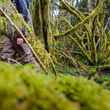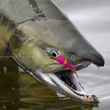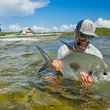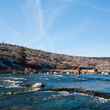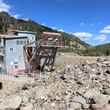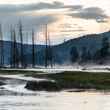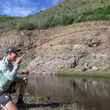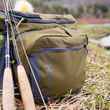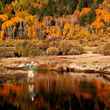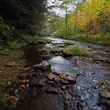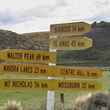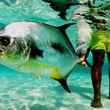It’s an almost ungodly sight. It doesn’t seem real. Not when you catch that first glimpse, and not when you’re standing there among a throng of tourists at the Talkeetna overlook, each of whom is asking the same question: “Is that really Denali?”
It can’t be real, can it? Those rocky crags in front of it… the ones that look like the Tetons—only bigger—they might be real. But that massive white-cloaked behemoth of a mountain behind them? That’s not real. It can’t be.
But Denali is real, all 20-some-thousand feet of it. On rare clear days, it is the Alaska skyline—a massive preserve of rock and ice that looms menacingly over the interior like a moody schoolmarm just waiting for a reason to be cranky.



